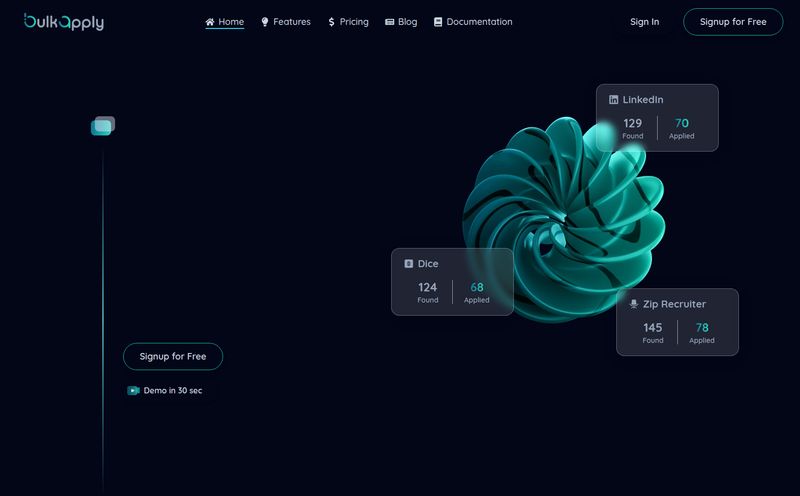I can still smell it. The stale coffee, the faint scent of paper, and the sharpie I was using because all my red pens had died a noble death. If you've ever been a teacher, a TA, or anyone who has to evaluate written work, you know The Pile. It’s that stack of essays, reports, or applications that stares at you from the corner of your desk, silently judging your life choices. We’ve all been there, fueled by caffeine and the sheer will to just… get… it… done.
For years, we've been promised that technology would save us. And for years, most of it has felt a bit… clumsy. Especially when it comes to the nuanced art of grading. But the AI wave is different, and I’ve been cautiously optimistic. So when I stumbled upon a tool called RubricPro, which claims to use AI as a “grading companion,” my interest was piqued. Not as a replacement, but as an assistant? Now that’s a pitch I can get behind.
So, What Exactly is RubricPro?
Let's get one thing straight. This isn’t one of those magical black-box AIs that claims to understand “good writing” on its own. Thank goodness. Instead, RubricPro’s entire system is built on a simple, powerful idea: it uses your rubric to grade. You provide the intelligence, the criteria, the very definition of what makes a piece of writing successful in your context. The AI just does the heavy lifting of applying it, over and over again.
It’s designed for educators, sure, but the website also points to its use for evaluating CVs, business plans, vendor proposals, and more. Essentially, if you have a stack of documents and a clear set of criteria for judging them, RubricPro wants to be your new best friend. It’s a pretty compelling proposition, cutting down on the monotony while keeping the human expert—that’s you—firmly in the driver’s seat.

Visit RubricPro
My First Spin with the Tool
The process looks deceptively simple. The main dashboard, from what I can see in their demo, is clean. No clutter, no confusing menus. It seems to boil down to a three-step dance:
- Upload Your Rubric: You feed it an Excel file (.xlsx) with your grading criteria. The columns are your performance levels (e.g., “Exceeds Expectations,” “Meets,” “Needs Improvement”) and the rows are the criteria themselves (e.g., “Thesis Statement,” “Use of Evidence,” “Clarity”).
- Upload Your Documents: You can then upload student essays, assignments, or whatever you’re grading, apparently in bulk. This is the real time-saver.
- Get Your Results: The AI churns through the docs, applies your rubric, and spits out the results. You get a tidy summary and can even download the graded files.
It’s like giving a super-fast, detail-oriented teaching assistant a perfectly clear set of instructions and a massive stack of papers. The potential to reclaim my weekends is... intoxicating.
The Features That Actually Stand Out
Drilling down, a few things really pop. It’s not just about speed, it’s about how it achieves that speed and what else it brings to the table.
The Custom Rubric is Everything
I can’t stress this enough. The fact that RubricPro doesn’t impose its own idea of good writing is its greatest strength. We’ve all seen generic AI feedback that’s so vague it’s useless. Because this system is anchored to your specific, nuanced criteria, the feedback it generates should, in theory, be much more relevant and targeted. It's the difference between asking a stranger for directions and using a GPS you’ve programmed with your exact destination and preferred route.
A Serious Nod to Data Privacy
Here’s something that made me sit up and pay attention. In their FAQ, RubricPro states: “After the grading process is complete, your documents are promptly deleted from our servers.” This is a huge deal. In an age where EdTech companies often feel like data-hoovering operations, this commitment to privacy is refreshing. For anyone dealing with sensitive student information (hello, FERPA) or confidential business proposals, this isn't just a feature; its a prerequisite.
More Than Just a Grader
One of the testimonials from a “Laura Beth” mentions encouraging students to use it to improve their work before submission. This is a fascinating angle. It reframes the tool from a pure evaluation machine to a formative feedback generator. A student could run their essay through a rubric to see where they’re weak, make revisions, and submit a much stronger final product. That’s using AI to foster learning, not just to assign a letter grade.
The Good, The Bad, and The Honest Truth
No tool is perfect, right? It's always a trade-off. Based on the site and my own experience with similar tools, here’s my take.
On the plus side, the time-saving is obvious. It's the headline feature. But I’m almost more interested in its power as a “second opinion.” Grading can be subjective, and our own biases or fatigue can creep in. Running a batch of essays through RubricPro could be an amazing way to calibrate your own grading, ensuring you’re applying your rubric consistently from the first paper to the fiftieth. It’s an impartial check on our own very-human fallibility.
Now for the reality check. The tool is only as good as the rubric you feed it. Garbage in, garbage out. A vague or poorly constructed rubric will lead to vague and unhelpful AI evaluations. This puts the onus back on the user to have a rock-solid assessment framework. You can't just wing it.
And then there’s the elephant in the classroom: student misuse. The FAQ addresses this, framing it as a tool for improvement. But let’s be real. In the wider conversation about AI, the fear is that students will just have AI write their essays. While RubricPro isn't a writing tool, the line between AI-assisted feedback and AI-driven writing is getting blurrier by the day. This isn’t a flaw of RubricPro, specifically, but an ethical tightrope the entire education sector is walking right now. It requires clear classroom policies and ongoing conversations about academic integrity.
What's the Damage? A Look at RubricPro's Pricing
Here's where I hit a small snag. When I tried to find a dedicated pricing page on their site, I was met with a dreaded “404 Page not found.” A minor stumble, but something a real user would encounter. It happens.
However, digging through the FAQs and testimonials gives us some clues. It seems to operate on a credit-based, pay-as-you-go model. One of the testimonials praises the “straightforward credits,” and the FAQ clarifies that “one credit is used to grade one document.”
I have mixed feelings about this model. On one hand, it’s great that you’re not locked into a monthly or annual subscription you might not fully use. You pay for what you need. On the other hand, without a clear price-per-credit, it’s hard to gauge the total cost. For a professor grading 200 students, this could add up. They do mention enterprise plans for schools and companies, which is a smart move. They even offer bonus credits for feature suggestions, which is a nice touch that shows they're listening to their users.
Frequently Asked Questions About RubricPro
I've pulled together some of the key questions from their site and my own brain.
Can AI actually grade written work effectively?
According to RubricPro, yes, and they cite internal and external cases showing it can be as effective as a human grader when using a well-defined rubric. The key is the quality of your input. It’s not judging taste, it’s matching content to your predefined criteria.
What happens if the AI makes a mistake?
The site mentions a process for reporting technical errors. If a glitch occurs, they seem willing to work with users. It's important to remember this is an assistant; the final judgment always rests with the human user, who should be reviewing the AI's output.
Is my data safe with RubricPro?
This is one of their biggest selling points. They claim all uploaded documents are deleted from their servers immediately after the grading is complete. This privacy-first approach is a major plus for anyone in education or business.
What exactly is a “credit”?
Simple: one credit equals one graded document. If you upload a batch of 50 essays, you’ll use 50 credits.
Can't students just use this to cheat?
This is a big-picture educational challenge. RubricPro is positioned as a feedback tool to help students improve their own work. However, any powerful tool can be misused. It’s up to educators to set clear guidelines on what constitutes acceptable use of AI assistance.
The Final Verdict: Is RubricPro Worth It?
After digging in, I’m genuinely optimistic. RubricPro isn't trying to be a magical, one-click solution that replaces educators. It’s something far more practical and, frankly, more useful. It’s a force multiplier.
It’s a tool that takes your expertise—codified in a rubric—and applies it at a scale and speed that humans just can't match. It promises to give you back your time, reduce the drudgery of repetitive grading, and provide a consistent baseline for evaluation. You’re still the pilot, you're just getting a very advanced autopilot for the long, straight parts of the flight.
For the overworked teacher drowning in papers, the HR professional screening hundreds of writing samples, or the professor who’d rather spend their time planning a great lecture than re-reading similar essays for the tenth time, RubricPro could be a game-changer. It’s not about removing the human touch, it's about freeing up the human to touch what really matters.
Reference and Sources
- The official website for the tool: RubricPro
- For further reading on AI in the classroom, EdSurge has a great article on the topic: Teachers Are Already Using ChatGPT in Their Classrooms



